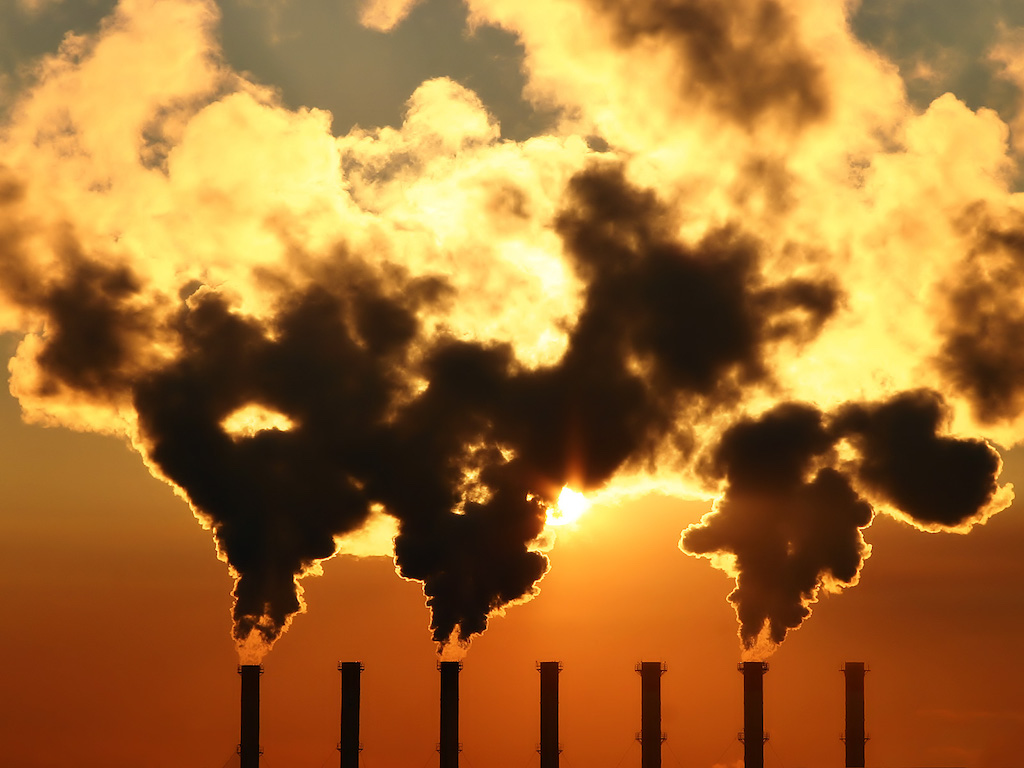Asia Climate Outlook Bleak: Population Boom, Rapid Urbanisation & Lack Of Leadership Underpins Crisis
7 Mins Read
As part of our Covering Climate Now week-long series, we are focusing on the climate crisis in Asia. As we reported earlier this week, Asia and the Pacific are particularly vulnerable to the most destructive effects of climate change. Today, we take a look at how Asia as a region is a significant contributor to our planet’s climate emergency. The region is the home to the world’s fastest growing population, which brings with it a host of demands from fossil fuel energy use to rapid urbanisation and consumption fuelled deforestation.
Explosive Population Growth Drives Emissions
Asia is currently home to around 60% of the world’s population, and with ballooning growth rates, this number is projected to reach 2.3 billion by 2050. While regularly identified as one of the regions to be hardest hit by global warming, Asia’s huge (and growing) population alongside related phenomena including urbanisation, relocation, industrialisation and demand for consumption means that the region will be a hotbed driving climate change. A rising middle class in particular, means that the region’s ability to meet its Paris Agreement goals are looking more and more unlikely. While the middle class population is set to increase globally, the bulk of it is driven by Asia: by 2030, 66% of the global middle class population and 59% of middle-class consumption will come from the region, according to the OECD Observer.
Rise In Middle Class Consumerism
With population rise comes rapid urbanisation. The Asian Pacific region as a whole has experienced rapid economic growth and urbanisation over the years, which has magnified activities that contribute to global warming. More populations are migrating from the rural countryside to cities in search for better paid jobs and many have middle-class materialist aspirations consumption habits to match. This mass migration is a major propellor of large-scale energy-intensive construction projects, from office skyscrapers to residential buildings for homes, and a major culprit of increased air pollution and the contamination of waterways as millions of people amass in crowded urban settings.
As populations get richer, their appetite for meat and dairy grows and that’s problematic for the climate. The livestock industry is responsible for 18% of global carbon emissions, more than the emissions generated by all transportation combined, according to the United Nations Food & Agriculture Organisation (FAO).
Beef, in particular, is especially carbon hefty because rearing cows generates methane, a greenhouse gas that traps heat at much higher rates than carbon dioxide. Demand for beef in Asia has fuelled Amazonian deforestation, as farmers have felt the need to cope with demand by setting fires to clear more land for a vicious cycle of soy cultivation and cattle rearing. Furthermore, producing meat and dairy products are incredibly inefficient as it requires vast amounts of land and water yet can only account for 18% of global food calories.
Intake of processed foods and other FMCG products is another deforestation driver, especially in the Southeast Asian region, where fires are deliberately set to clear rainforests for the lucrative palm oil industry – a key ingredient in almost everything processed from confectionary to cosmetics.
To top this off, environmental regulation in Asia remains weak to non-existent. Despite most Asian nations signing the Paris Agreement and pledging to limit the average global temperature rise to 2 degrees Celsius above pre-industrial levels, many countries in the region have continued to do little in the way of actual action. This is partly to do with the way the Paris Agreement is set up to rely on nationally determined contribution, but more importantly, where regulations do exist, enforcement is inconsistent. Further, lack of progress monitoring and data collection are both serious hinderances that impairs real climate action in the region.
China
China works hard to appear as an international climate action champion on the global stage, especially after the United States dropped out of their Paris commitments, with a national plan to invest US$ 361 billion in renewable energy between 206 and 2020 to decrease its reliance on fossil fuels. But despite Beijing’s claims to be leading the world on climate change, a 2019 study from Johns Hopkins University reveals that China’s methane emissions are growing at an alarming rate, mainly due to its coal mining sector.
After China’s carbon dioxide emissions plateaued, they sharply rose again in 2018, as local authorities launched more coal power plants, which emits methane. While methane is less prevalent in the earth’s atmosphere than carbon dioxide, it is a far more potent greenhouse gas that traps 28 times more heat, according to the Global Carbon Project.
Hong Kong
While having committed to reduce 26 – 36% of the city’s absolute carbon emissions relative to 2005 levels by 2030, Hong Kong has continued to ignore the emissions generated from consumption of imported goods. In a study published last year, the research team at the University of Hong Kong found that the majority of Hong Kong’s greenhouse gas emissions stems from imported meat and dairy consumption, which continues to rise year on year. Not only does the shipping and flying and fossil-fuel manufactured plastic packaging of imported foods contribute to greenhouse gas emissions, the demand for meat is an important driver of emissions too – ranking Hong Kong the 7th highest emitter among 113 regions in the world.
South Korea
Although the South Korean government has revised its carbon reduction roadmap from 25.7% to 35.1% by 2030, which has been met with plans of massive investments in the energy sector, experts have pointed out that this it is unlikely that the reduction goals will be met.
In a 2019 report by the Norwegian University of Science and Technology, Seoul’s carbon emissions topped the list in data involving 13,000 cities globally. Five other South Korean cities were also included in the top 500 list of worst carbon footprint, with most of the country’s emissions coming primarily from the metal industry, chemical, oil refining and manufacturing sectors.
Even with the revised climate target plans, the global Climate Action Tracker body has rated these targets as “highly insufficient,” underlining that they are not stringent enough to help the country achieve its Paris targets.
Southeast Asia
Between 1990 and 2010, carbon dioxide emissions increased faster in Southeast Asia than anywhere else in the world, according to an IMF report. Much of these emissions are driven by energy requirements linked to industrial developments and the rise of middle-class consumer markets continues to grow. In 2018, the International Energy Agency (IEA) predicted that energy demand will increase by 66% by 2040, with coal alone accounting for two fifths of this increase.
With the burning of coal set to escalate, due to the relative abundance of the fossil fuel and low cost compared to cleaner renewable energy sources, the subregion is responsible for a huge amount of greenhouse gas emissions that drive global warming.
Despite Jakarta committing to slashing emissions by 29% by 2030 under the Paris Agreement, Indonesia has continued to favour coal plants over renewables or gas, making it the 5th largest coal producer in the world. Malaysia and Thailand have similarly made little progress even as they have begun looking at more sustainable sources of energy, ranking 8th and 9th respectively as major world coal producers.
Another major source of heat-inducing greenhouse gases is ongoing deforestation in Southeast Asia. Right now, fires are burning through the Indonesian rainforest, one of the world’s most crucial tools to absorb carbon. These fires are deliberately set by farmers to clear forest land for agricultural plantations, which in the case of Indonesia is dominated by the production of pulp wood and palm oil, common raw ingredients used to manufacture processed foods and packaging. For now, it looks like forestry-related emissions are not plateauing.
There have been some small signs of progress. Singapore, for instance, put in force the region’s first carbon tax as a part of its Paris commitments. Under this policy, companies that emit more than 25,000 tonnes of greenhouse gases must pay between US$7 – 15 for each ton above the limit. But even so, these policies remain nationally bound, and there is little regional coordination with other countries in Asia in their approach to monitoring emissions and decarbonisation.

India
Densely populated and on an intensive economic growth plan India is a major releaser of greenhouse gases, predominantly from the burning of fossil fuels such as coal, oil and natural gas. In a 2018 report by the International Energy Agency (IEA), carbon dioxide emissions in India rose 4.8% from the previous year – indicating a faster growth than the United States and China and other major energy-consuming countries.
Some positive governmental changes are happening – India has begun to develop a thriving renewable energy industry and has made plans to increase this sector to 40% of power generation by 2030. To tackle emissions from transport, authorities have started a scheme since April to incentivise the use of electric vehicles and build more charging infrastructure.
Rising population, consumption levels and rapid urbanisation means that Asia’s role in the global climate crisis is vital- and the region has a chance to step up and show environmentally-forward leadership at a time when the rest of the world is not doing enough with a weakened Europe and a climate-denying administration in the US.
Not only is the region most predisposed to the worst effects of the phenomenon, climate disasters all around the world will be unavoidable if urgent actions are not taken now. Asia can, and must, take a front row seat at the table, whether it be shifting towards a low carbon economy by adopting renewable energy or building resilience measures on a structural scale.
More regional coordination to monitor compliance to climate policies is needed, and governments must incentivise low-carbon initiatives and impact investment across Asia Pacific.
We as individuals can also do our bit by cutting down on meat intake, supporting tree-planting projects, reducing single-use waste and consuming less and more sustainably.
This article is a part of Green Queen’s collaboration in the Covering Climate Now project, a week-long initiative to raise global awareness of our planet’s climate emergency.
Lead image courtesy of Alpha Coders.




